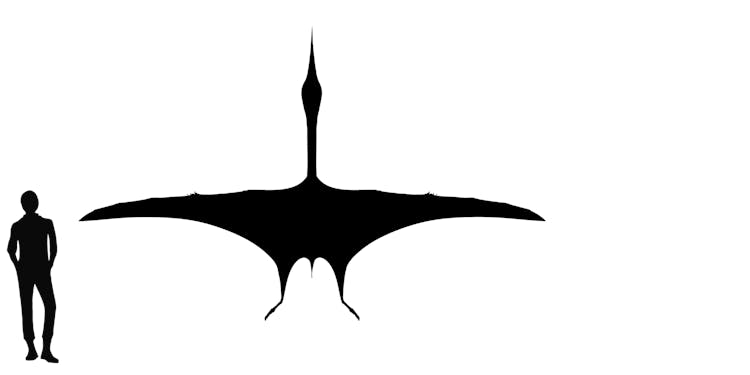


Azhdarcho lancicollis lent its name to the whole azhdarchid family, a group of large, long-necked pterosaurs that has only recently begun to reveal its secrets to scientists. The animal hails from the somewhat well-known Bissekty Formation of Uzbekistan.
This in itself is unique, considering that not many animals are known from the start of the Late Cretaceous, roughly 92 million years ago. Bissekty preserves an impressive array of fauna typical for the time. Among these are duckbill dinosaurs, ancestors of both tyrannosaurs and horned dinosaurs, crocodiles, birds and fish and just a single pterosaur, Azhdarcho.
Standing a little more than 2 meters tall, with a 4.5-meter wingspan to boot, it was a medium-sized pterosaur by Cretaceous standards. Azhdarcho was one of the main mid-level hunters of Bissekty by way of mass and prey choice.
Fossils were first described in 1984 by Lev A. Nesov. Nesov collected a series of elongated neck bones from Bissekty and used these to form a new pterosaur subfamily. At the time he called it the Azhdarchinae and included the subfamily within the pteranodontids. Later as more azhdarchids were discovered and described scientifically, the animals were classed in their own family.
Nesov also noted that the long neck of the new pterosaur was highly inflexible, hence raising questions about its lifestyle. Nesov first assumed that it was a skimmer that fed on fish, a theory that has now been discarded for all pterosaurs.
Rather, Azhdarcho and the rest of the azhdarchids were terrestrial stalkers that hunted overland. Using its height and long, spear-like beak, Azhdarcho lancicollis could prey upon both smaller dinosaurs and other little vertebrates big enough to fit into its mouth.
